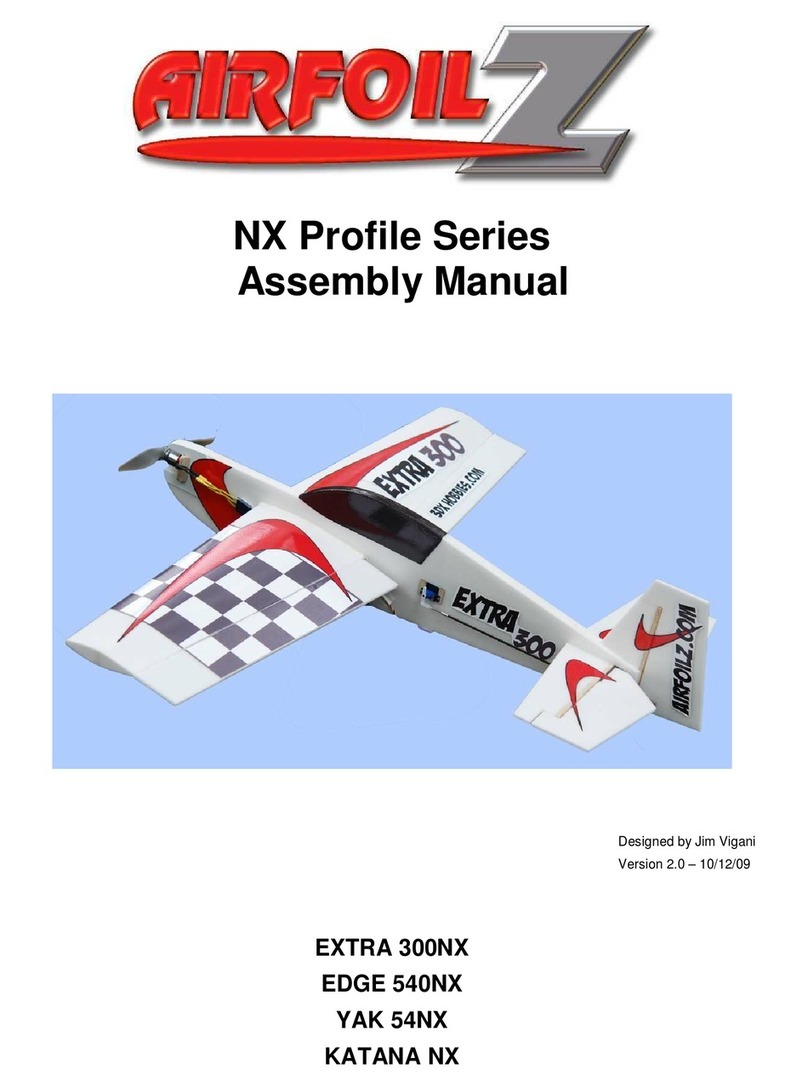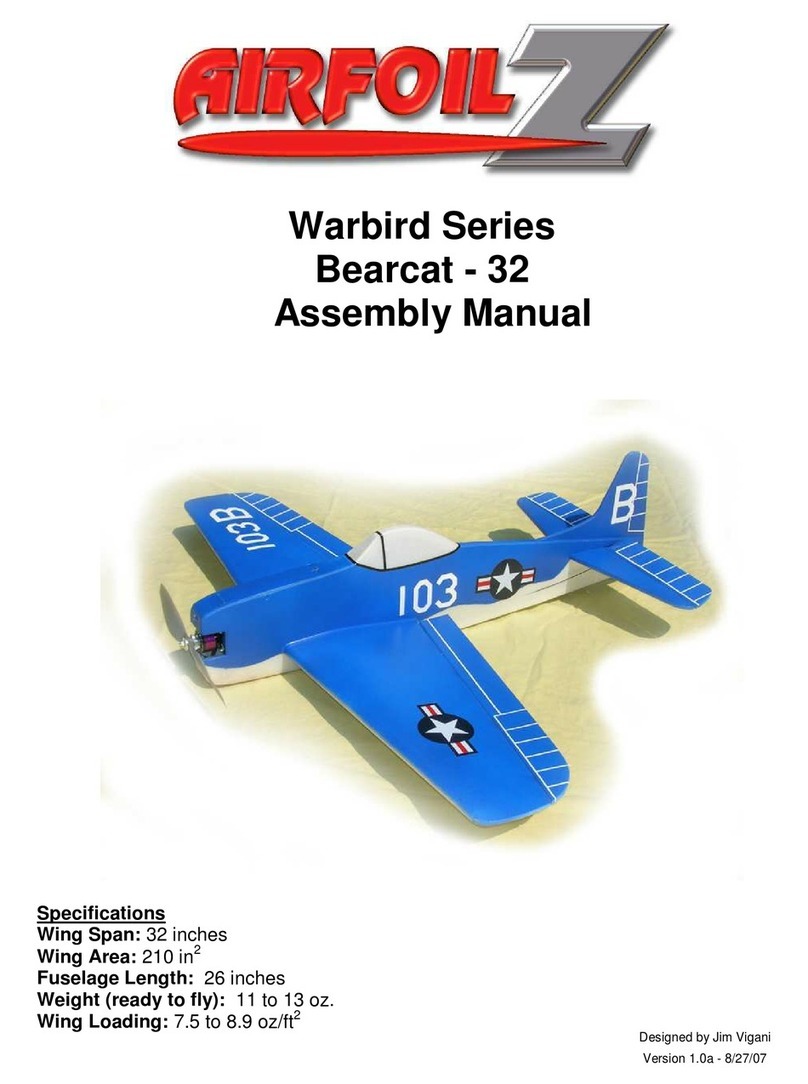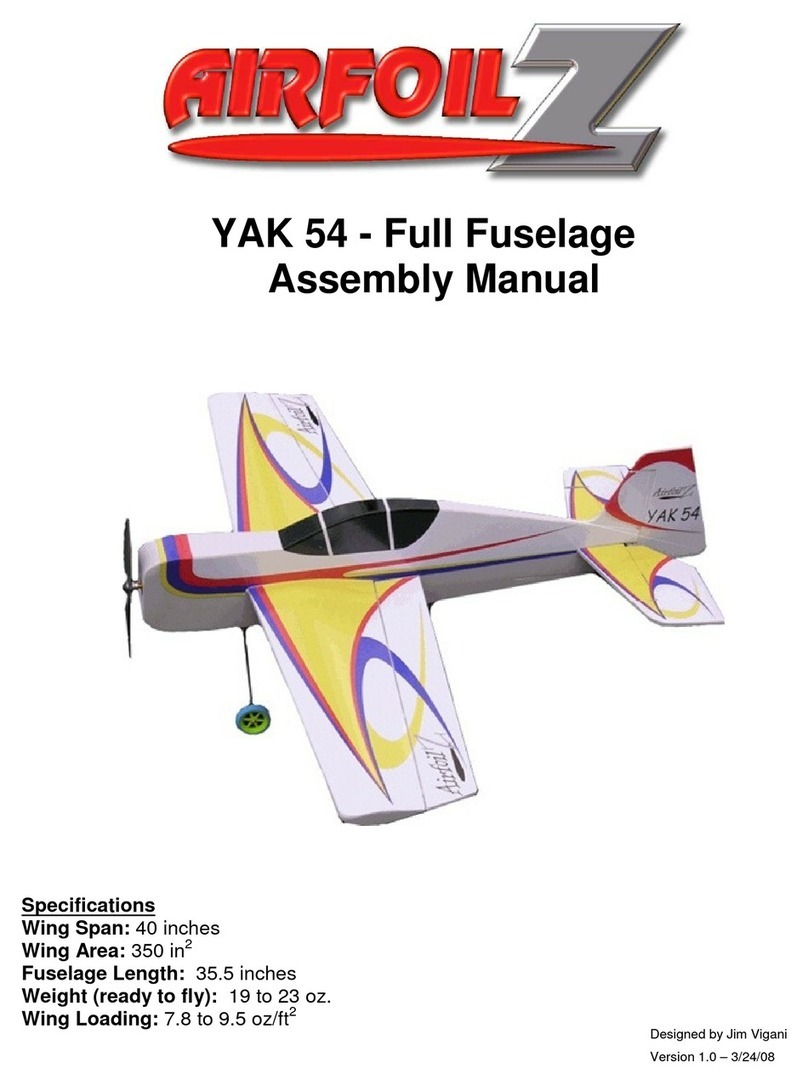
© 2007 ALL RIGHTS RESERVED 3
INTRODUCTION
1POWER SYSTEM
2
Thank you for choosing the AirfoilZ Yak54 airplane. We
have taken great care to provide a design and kit com-
ponents that, when properly assembled, will give you
a high quality model with outstanding performance.
While the assembly is not complicated, the quality and
ultimate performance of your model will depend a great
deal on the care you take while building. Please read
these instructions carefully and be sure that you under-
stand them before you start. Take care to assemble the
components as shown and in proper alignment.
This plane has been designed using a Hacker A20-20L
Brushless Motor with a Hacker X-20 Speed Controller and
Thunder Power 1320 mah, 3S Li-poly battery, turning an
APC, 10 x 4.7 Slow Flyer propeller. Other power systems
with similar capabilities can be used. Performance will
vary depending on the specic power system selected.
For information on alternate power systems please visit
http://www.airfoilz.com/forums.
ADDITIONAL ITEMS
3
In addition to the kit contents, we recommend having
the following building supplies on hand to complete the
kit assembly in accordance with this manual.
Foam safe (odorless) CA
Foam safe CA“Kicker”
Thin CA
Gorilla glue and/or 5 and 15 min epoxy
JB Weld
Double back tape or spray adhesive
Low tack masking tape (blue painter’s tape)
Sanding block with 100 grit sandpaper
Sanding stick or emery board (150 grit)
Craft Popsicle-size wooden sticks
Soldering iron and resin core solder
1/32 inch and 3/32 inch diameter drill bits
Exacto knife with #11 blade
Utility knife
Small square
36 inch ruler
Needle nose pliers
3/8 inch diameter brass tubing
½ inch diameter brass tubing
Dremel tool with abrasive cuto wheel
Diagonal cutting pliers
REQUIRED
Building Supplies
3.1
RECOMMENDATION
This radio-controlled model is not a toy and, if operat-
ed inappropriately, can cause serious bodily injury and
property damage. It is the buyer’s responsibility to as-
semble the kit correctly and to properly install the mo-
tor, radio, and all other equipment. The model must al-
ways be own in accordance with the safety standards
of the Academy of Model Aeronautics (AMA).
This model is designed to be fully 3D capable. While
it is reasonably simple to assemble, it is not intended
for the novice ier. Do not attempt to learn to y with
this model! If you are an inexperienced modeler, we
recommend that you get the assistance of an experi-
enced modeler to help you with the assembly and ini-
tial ights. There are many local clubs that can oer
help with assembly and ight instruction. Information
on local clubs may be found through the Academy of
Model Aeronautics (AMA) at www.modelaircraft.org.
The AMA has over 2500 chartered clubs throughout
the country.
We do not recommend the use of hot glue for mount-
ing components such as servos, control horns, receiv-
ers, or speed controls.
WARNING































